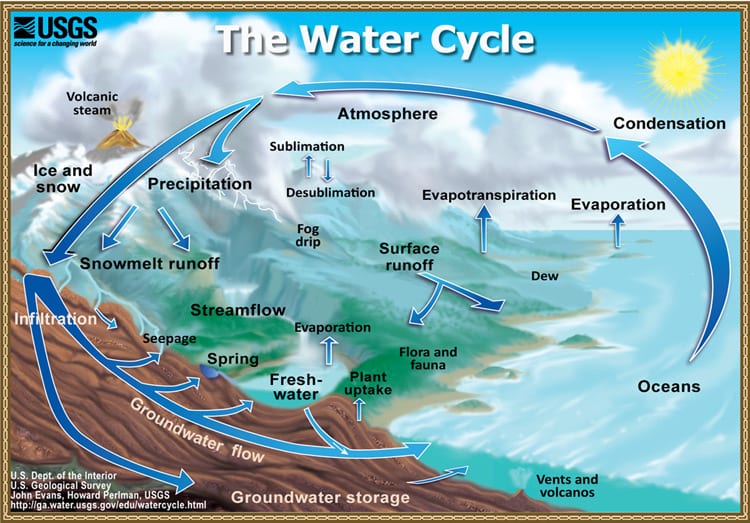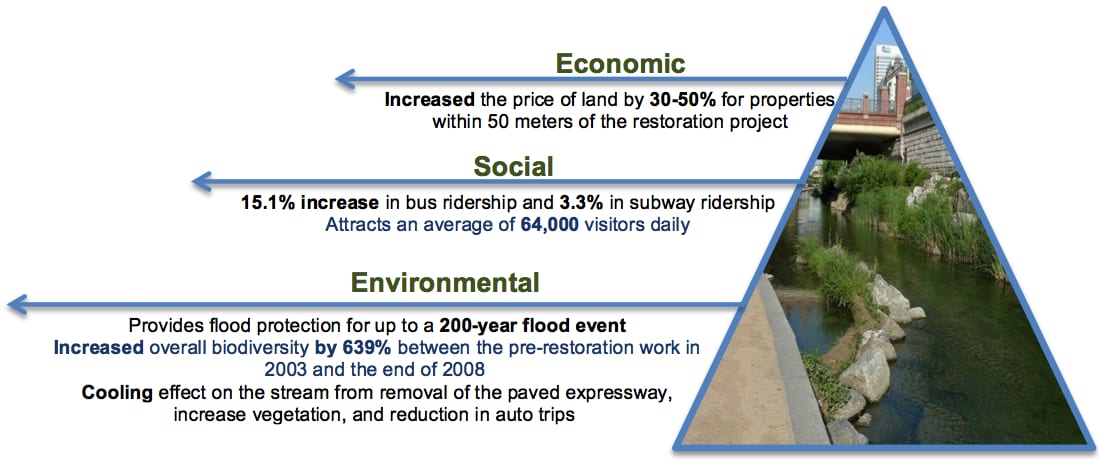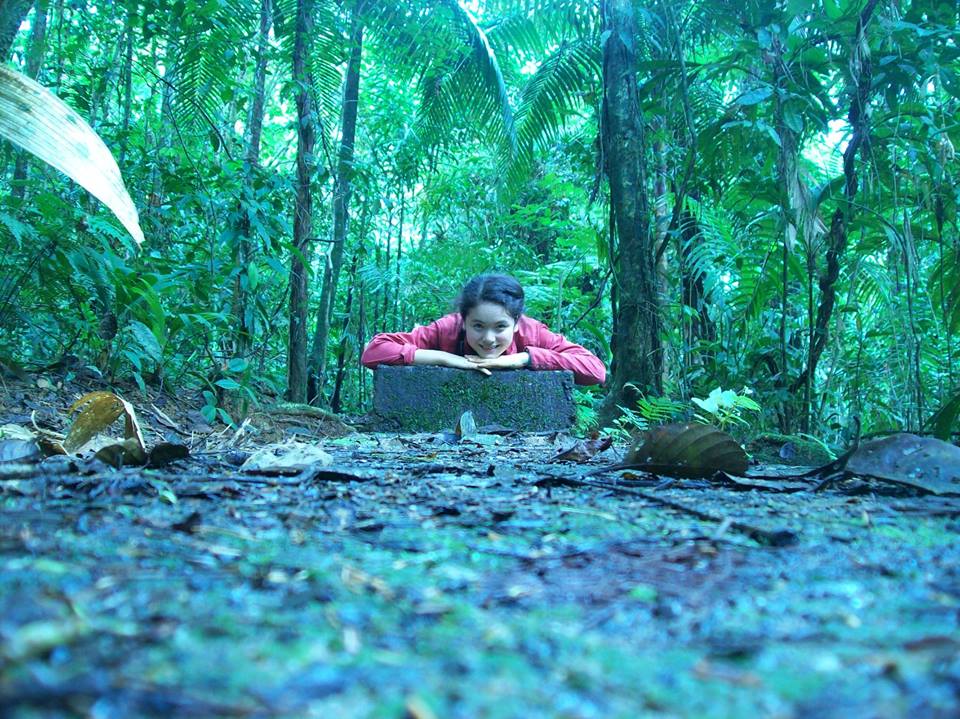We cannot talk about streams without first discussing a very important concept: the watershed [1]. A watershed, or drainage basin, is an area between ridges where precipitation collects in creeks and streams, eventually coalescing to form rivers.
The way precipitation moves across land is analogous to the way water from a faucet pools in the depression of your palms when you cup your hands. With this big picture in mind, I am going to tell you the birth, death, and resurrection story of a seemingly small, but vitally important component of watersheds — the stream.

Life is a Like a…Stream?
Have you ever wondered where streams come from and where they go? Let's take a ride down the “life is a stream†analogy, or scientifically known as the “river continuum†concept.
Streams are born as runoff when precipitation exceeds evaporation, and like a toddler on the go, they are immediately off and running. As they make their way toward the ocean, they grow with distance. Rain and snowmelts push the momentum of streams like the major events that make way through the meandering path of life.
Life is not always as clear and uninterrupted a clear and serene stream. As streams head to the ocean, water can be cycled back to the atmosphere by evaporation, transpiration by plants, or simply infiltrate as groundwater. Also, some of it will end up in your pool, fish tank, or drinking glass, and then eventually turns to runoff again.
As you are probably aware, we humans have a way of sending water back polluted [3]. Furthermore, its journey oftens halts at a dead end, due to drought and unchecked consumption of freshwater [4].
What are Streams?
In technical terms, a stream is a body of water whose current is confined within a bed and stream banks. They are also complex and necessary ecosystems that cycle energy, nutrients, sediment, and water.
Organisms including plants, microbes, insects, amphibians, reptiles, fish, birds, and mammals are intricately dependent on the resources streams provide.On a broader scale, they are a network of flood-controlling riparian habitats, important groundwater recharge zones, and efficient pollutant filtration systems [5].
Urban Streams as Sources of Life
So what is in it for us humans? Streams do countless things for us; they inspire art with their beauty, serve as important food sources, and open doors for scientific observations and discoveries. Unfortunately, the reality is that, just like life, streams can become fast-paced, a little messy, and chemically imbalanced. Such is the plight of a typical urban stream.
Lack of proper management in human-developed areas has led to degradation of stream habitat quality and biodiversity.
Urban streams have tremendous potential for providing social and environmental capital through wildlife habitat and ecosystem services, as well as raising property values and enriching human experiences. In their own unique way, they may even foster a bond between people and their local ecosystems, imparting a responsibility to maintain their health and functioning.
Lack of proper management and oversight in human-developed areas has often led to degradation of stream habitat quality and, consequently, human health and biodiversity. The good news is that although degraded streams may not naturally return to their prior state, there are restoration efforts that can be made to reinstate their ecological integrity.
A Novel Example
The Cheonggycheon (ì²ê³„천) stream restoration project is a wonderful testament to the high potential for success in ecological restoration [6]. Cheonggycheon is an urban stream running 3.6 miles through downtown Seoul, South Korea, a capital city well known for its environmental woes.
Before restoration plans were implemented, a road covered the stream from human sight and sunlight. Sunlight is important for the existence of a healthy stream community, as without sunlight, the algae that serve as the basis of stream food webs cannot photosynthesize. Also, the stream was inaccessible to native wildlife, vulnerable to pollutants like gasoline runoff, and altogether unable to function as a healthy ecosystem.

It was not easy to resurrect this neglected urban stream. Collaborative planning and implementation were necessary among government officials, landscape designers, scientists, and engineers.
A Light at the End of the Tunnel?
Why is this happening in Seoul and not in, say, Athens? Another stream with a hidden history exists right on the UGA campus. It is called Tanyard Creek.
There are many reasons why action has not been taken to restore the Tanyard Creek watershed and other campus watersheds. Perhaps it has to do with a combination of conflicting social and ecological values and roadblocks in making challenging economic and political decisions.
Positive ecological outcomes of stream restoration may be quantifiable and even highly valued, but the benefits for human well-being are difficult to describe. Though these benefits may make the investment in restoration worthwhile, they cannot be quantified or summed up by numbers or even words.
Could you imagine a restored Tanyard Creek in the future? A vision and a team of professional collaborators, active community members, and volunteers are needed to continue the process. The sooner we understand that the fate of our urban streams is dependent on both natural processes and the choices of the humans living around them, the more informed and motivated we will be to restore them.
If you are interested in learning more, volunteering, or promoting local efforts in Athens to take the city “upstream†in its environmental outlook, check out Watershed UGA [8] and the Tanyard Creek [9] and Driftmier Woods [10] restoration effort!
About the Author
 Suzie Henderson is an undergraduate student in the Odum School of Ecology at the University of Georgia. You may see her among herds of goats, boot-deep in streams and mud, or cooking up creativity in the kitchen (basically living the college dream). If any of those things sound exciting to you, connect with her on Facebook or email her at suzieuga@uga.edu. More from Suzie Henderson.
Suzie Henderson is an undergraduate student in the Odum School of Ecology at the University of Georgia. You may see her among herds of goats, boot-deep in streams and mud, or cooking up creativity in the kitchen (basically living the college dream). If any of those things sound exciting to you, connect with her on Facebook or email her at suzieuga@uga.edu. More from Suzie Henderson.
References
[1]http://water.usgs.gov/edu/earthrivers.html
[2] http://water.usgs.gov/edu/rivers-contain-groundwater.html
[3] https://www.youtube.com/watch?v=NYsYedHNJgY
[4]http://water.usgs.gov/edu/gallery/watercyclekids/pictures/colorado-river-end.html
[5]http://www.fws.gov/bisonrange/Riparian.htm
https://www.youtube.com/watch?v=mxv65vUQaRg
[7] http://landscapeperformance.org/case-study-briefs/cheonggyecheon-stream-restoration
[10] http://columns.uga.edu/news/article/nature-revival-ecology-professor-studies-ecological-restoration/
About the Author
- athenssciencecafehttps://athensscienceobserver.com/author/athenssciencecafe/April 17, 2020
- athenssciencecafehttps://athensscienceobserver.com/author/athenssciencecafe/April 12, 2020
- athenssciencecafehttps://athensscienceobserver.com/author/athenssciencecafe/April 3, 2020
- athenssciencecafehttps://athensscienceobserver.com/author/athenssciencecafe/March 30, 2020







